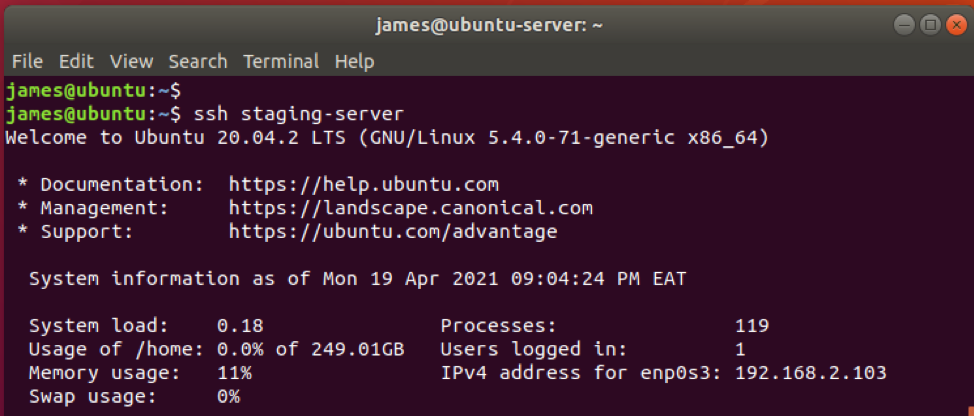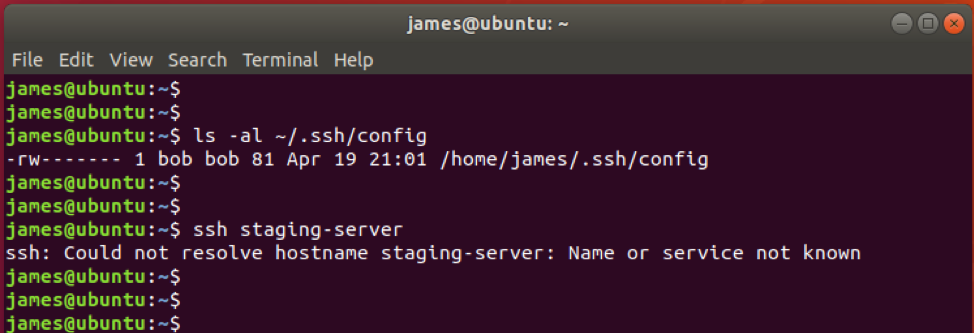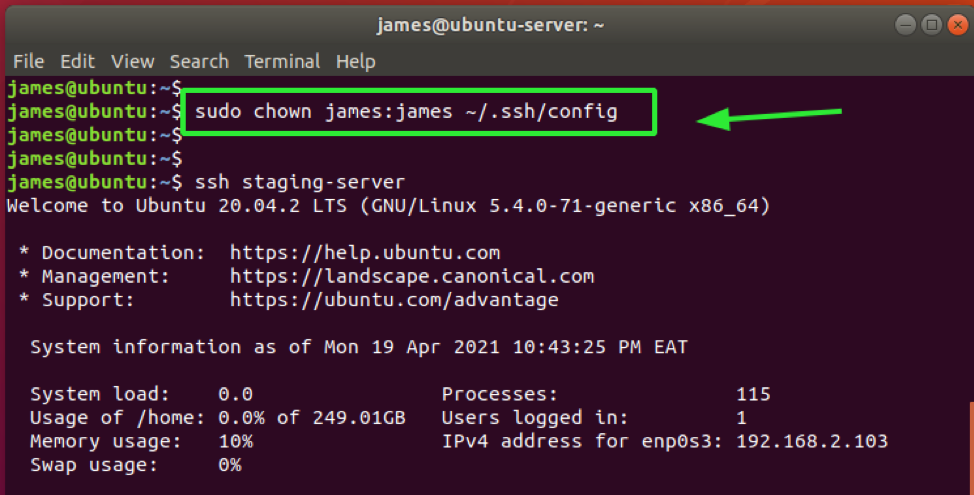SSH files are stored in the .ssh folder. This is a hidden folder that resides in the home directory. The .ssh directory is not created by default; it is created when you initiate a connection with a remote host or use the ssh-keygen command to generate the private and public authentication keys as when you want to set up passwordless ssh authentication.
The .ssh folder. contains essential SSH files such as:
- Public and Private keys ( id_rsa and id_rsa.pub ).
- The known_hosts file – Contains public keys of all the remote systems that you have connected to.
- The config client configuration file
If the config file doesn’t exist, you can easily create one as shown.
The .ssh/config client configuration file
Each time you initiate an SSH connection, you need to specify details such as the IP address or domain name and the port SSH is listening to. For example,
It can be hectic to have to always remember such details. And this is where the ~/.ssh/config file comes in. The ~/.ssh/config file is a configuration file that allows you to configure per-user configuration details of the remote host. It saves you the agony of always having to recall the per-host details required for connection.
A sample config file appears as shown.
HostName 192.168.2.103
User james
Port 22
A simple SSH command into the remote host would look as follows:
The .ssh/config file permissions
By default, the ~/.ssh/config client configuration file possesses the 644 file permissions. You can verify that using the ls -la command as follows.
This implies that the owner and group of the file both have read and write permissions (rw) while other users have read permissions only (r).
NOTE:
As a rule of thumb, never assign write permissions to other users. This poses a security risk to your file, and other users who are not yourself or in your group can modify the contents of the file. Assigning write permissions will result in the ‘Bad owner or permissions’ error as indicated below.
Here, the config file was assigned the permissions 666. This implies that everyone can both read and write the file.
Similarly, the same case applies here where the file has been assigned 777 permissions. This implies that everyone can read, write and execute the file. Simply put, anyone has all the rights to the potentially dangerous file.
Best practice recommends that you leave the default permissions at 664 or 600, where only the owner has read and write permissions (rw). This way, the file remains safe from being modified by unauthorized users.
Additionally, ensure that you own the file. If the file is changed to another user, SSH will not be able to resolve the hostname provided in the config file.
In the example below, the ~/.ssh/config ownership has been set to bob:bob.
To resolve this issue, I reverted back to the original file ownership using the chown command.
With the file permissions reverted, now I can have access by invoking the SSH command followed by the hostname specified in the config file.
And that is all you need to know about setting permissions on the ~/.ssh/config file. Ensure you don’t set read permissions to the rest of the users and ensure that you own the file.







